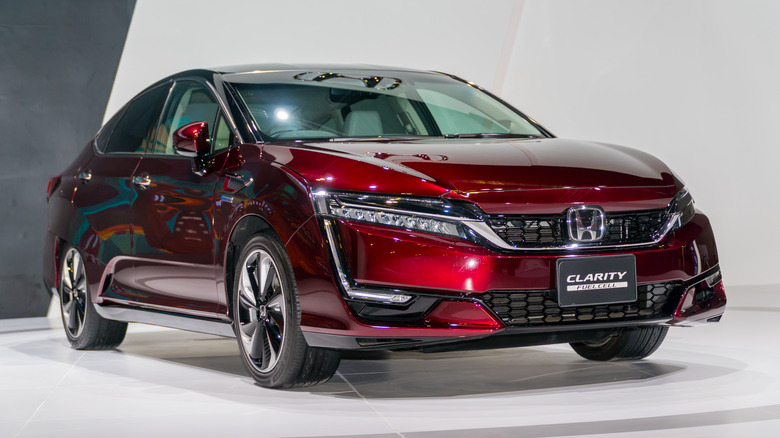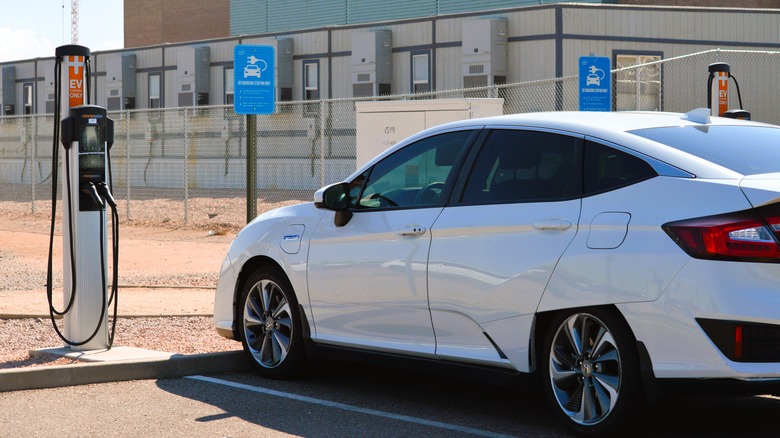Here's Why Honda Discontinued The Clarity
Throughout the late '10s, Honda gradually revealed three new iterations of its Clarity model. The first was the standard 2016 Honda Clarity Fuel Cell Vehicle (FCV) model that was powered through hydrogen-based technology, capable of reaching approximately a 68 miles per gallon equivalent before needing to recharge, and sold in limited distributions to regions with hydrogen refueling infrastructure. The following year, the Japanese automaker launched the electric 2017 Honda Clarity FCV, which sported a noticeably redesigned and spacious cabin coupled with 221 lbs-ft of torque and 174 horsepower generated from its engine. Finally, the Honda Clarity Plug-In Hybrid (PHEV) was unveiled in 2018, exhibiting a 47-mile all-electric range that expanded to 340 miles with the additional power from its combustion engine.
This cutting-edge trio of the Clarity line was meant to further advance Honda's goal of capitalizing on the growing electric vehicle and hybrid segment in the market. However, all three models would experience a short run, as Honda decided to discontinue the EV model in 2020, shortly followed by the termination of the hydrogen and hybrid models in the summer of 2021. Honda has delivered a significant number of hybrid and EV models, such as the Honda E and CR-V Hybrid, while continuing its push toward 100% battery cell or fuel cell-engineered vehicles by 2040.
With all of the resources invested in the research and development of EV and hybrid technology, why, then, did the Clarity, in particular, experience such an unfortunate fate?
A lack of demand and consumer trust led to the early termination of the Clarity
While the fuel cell technology of the Honda Clarity demonstrated great potential, the reason for its discontinuation may simply be a matter of the right kind of engineering at the wrong time. When the automaker first launched the new models of the Clarity line, they were all sold in the Japanese, European, and U.S. markets. However, at the time, these regions lacked the properly equipped stations to sustain such a substantial distribution — for example, there were only 43 hydrogen refueling stations available in California as of 2023.
U.S. sales records alone showed a minimal performance of the Clarity model, which only experienced a notable increase in 2018 to an estimated 20,174 units and then declined almost by half in the following year. Germany, the largest consumer of hydrogen-fueled vehicles in the European Union, incurred a 70% decline in registrants, indicating that alternative fuel technology was still lacking in consumer trust and demand. Moreover, potential EV buyers in predominantly car-driven markets like the U.S. would be more inclined to purchase other models with greater range, such as the Chevrolet Bolt EV, which got up to 238 miles.
Given the dual impact of low-profit figures and a lack of demand and trust, its highly unlikely that Honda will revive the Clarity model anytime soon. However, the automaker is still heavily invested in further developing and expanding the capabilities of hydrogen technology. Recently, Honda shared more details about its upcoming joint venture with General Motors in the production of the hydrogen-fuel-celled CR-V e:FCEV, which is expected to hit the market in 2025.

